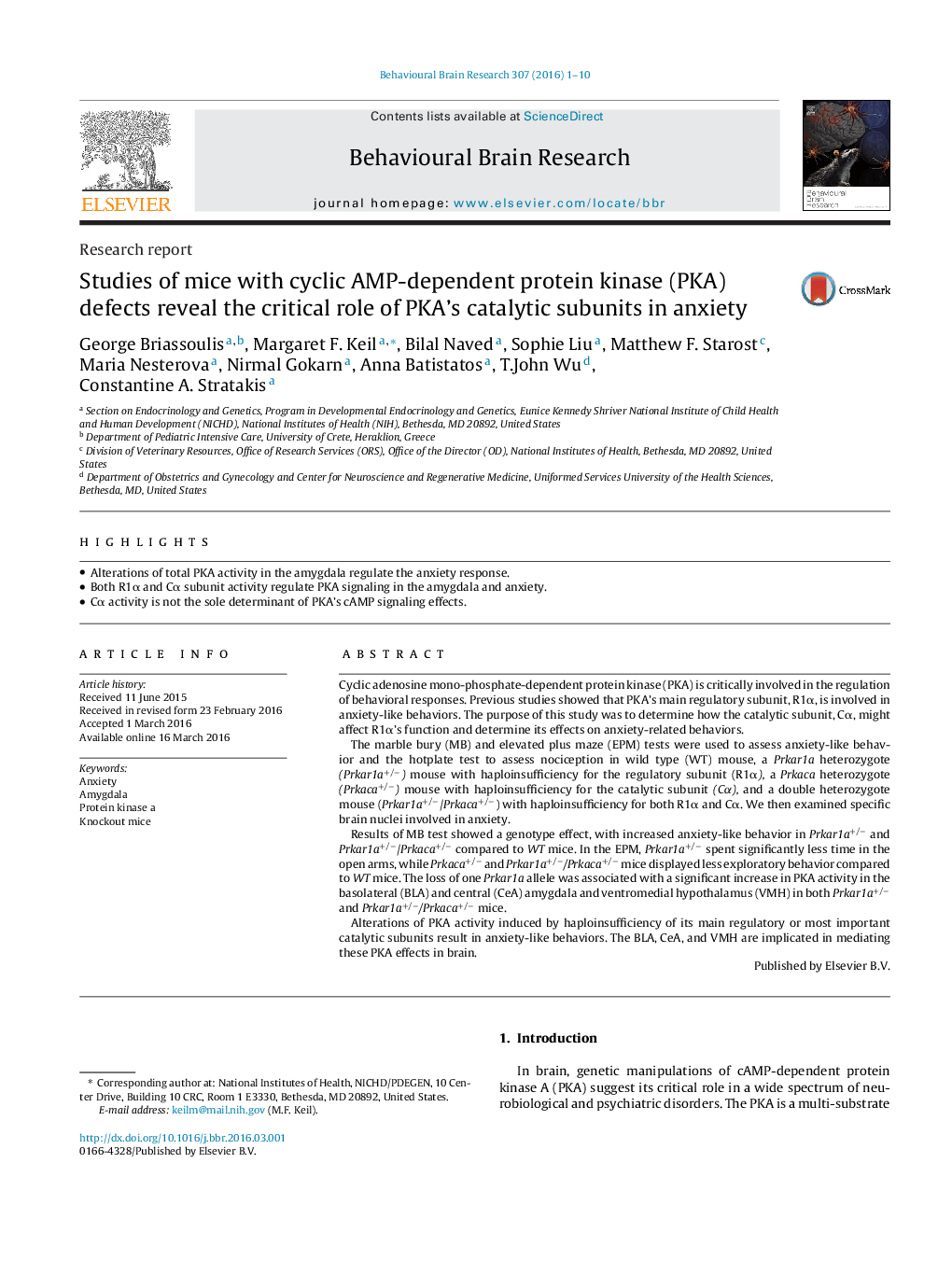| Article ID | Journal | Published Year | Pages | File Type |
|---|---|---|---|---|
| 4312248 | Behavioural Brain Research | 2016 | 10 Pages |
•Alterations of total PKA activity in the amygdala regulate the anxiety response.•Both R1α and Cα subunit activity regulate PKA signaling in the amygdala and anxiety.•Cα activity is not the sole determinant of PKA’s cAMP signaling effects.
Cyclic adenosine mono-phosphate-dependent protein kinase (PKA) is critically involved in the regulation of behavioral responses. Previous studies showed that PKA’s main regulatory subunit, R1α, is involved in anxiety-like behaviors. The purpose of this study was to determine how the catalytic subunit, Cα, might affect R1α’s function and determine its effects on anxiety-related behaviors.The marble bury (MB) and elevated plus maze (EPM) tests were used to assess anxiety-like behavior and the hotplate test to assess nociception in wild type (WT) mouse, a Prkar1a heterozygote (Prkar1a+/−) mouse with haploinsufficiency for the regulatory subunit (R1α), a Prkaca heterozygote (Prkaca+/−) mouse with haploinsufficiency for the catalytic subunit (Cα), and a double heterozygote mouse (Prkar1a+/−/Prkaca+/−) with haploinsufficiency for both R1α and Cα. We then examined specific brain nuclei involved in anxiety.Results of MB test showed a genotype effect, with increased anxiety-like behavior in Prkar1a+/− and Prkar1a+/−/Prkaca+/− compared to WT mice. In the EPM, Prkar1a+/− spent significantly less time in the open arms, while Prkaca+/− and Prkar1a+/−/Prkaca+/− mice displayed less exploratory behavior compared to WT mice. The loss of one Prkar1a allele was associated with a significant increase in PKA activity in the basolateral (BLA) and central (CeA) amygdala and ventromedial hypothalamus (VMH) in both Prkar1a+/− and Prkar1a+/−/Prkaca+/− mice.Alterations of PKA activity induced by haploinsufficiency of its main regulatory or most important catalytic subunits result in anxiety-like behaviors. The BLA, CeA, and VMH are implicated in mediating these PKA effects in brain.
